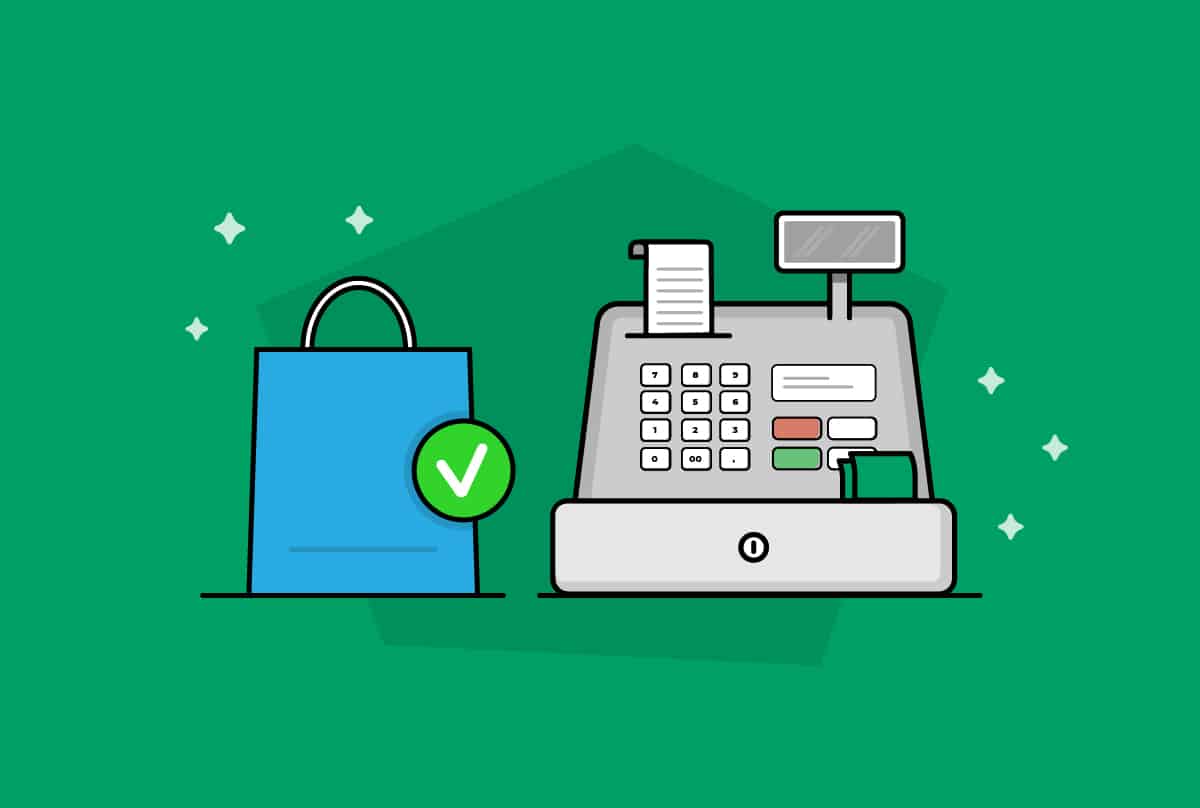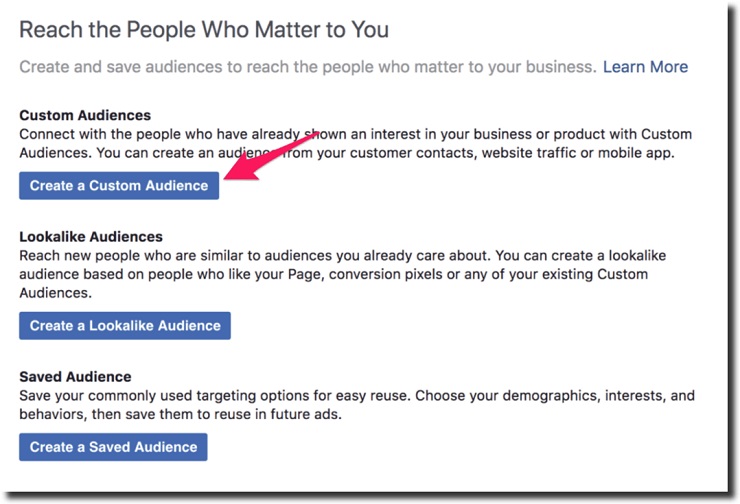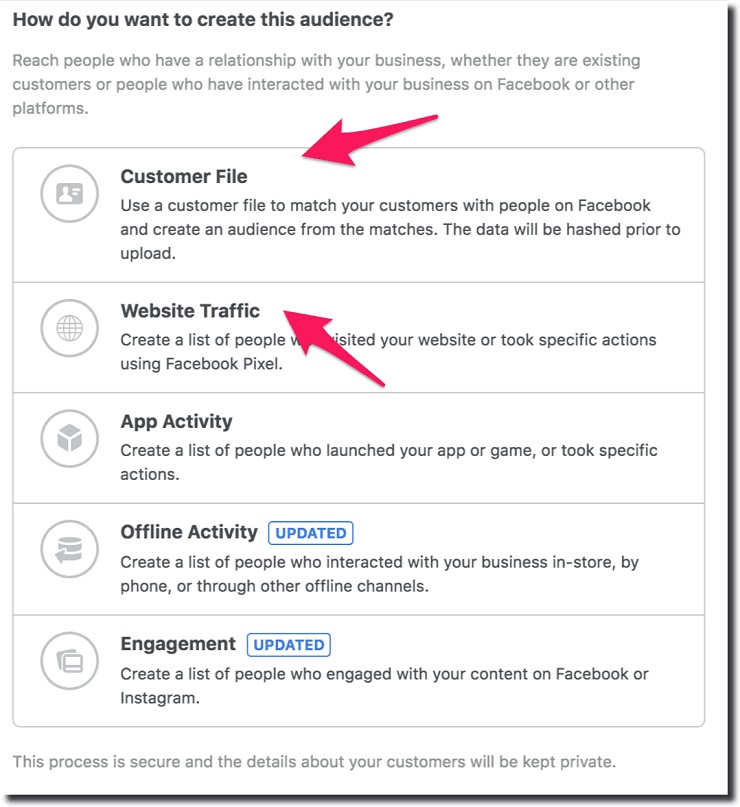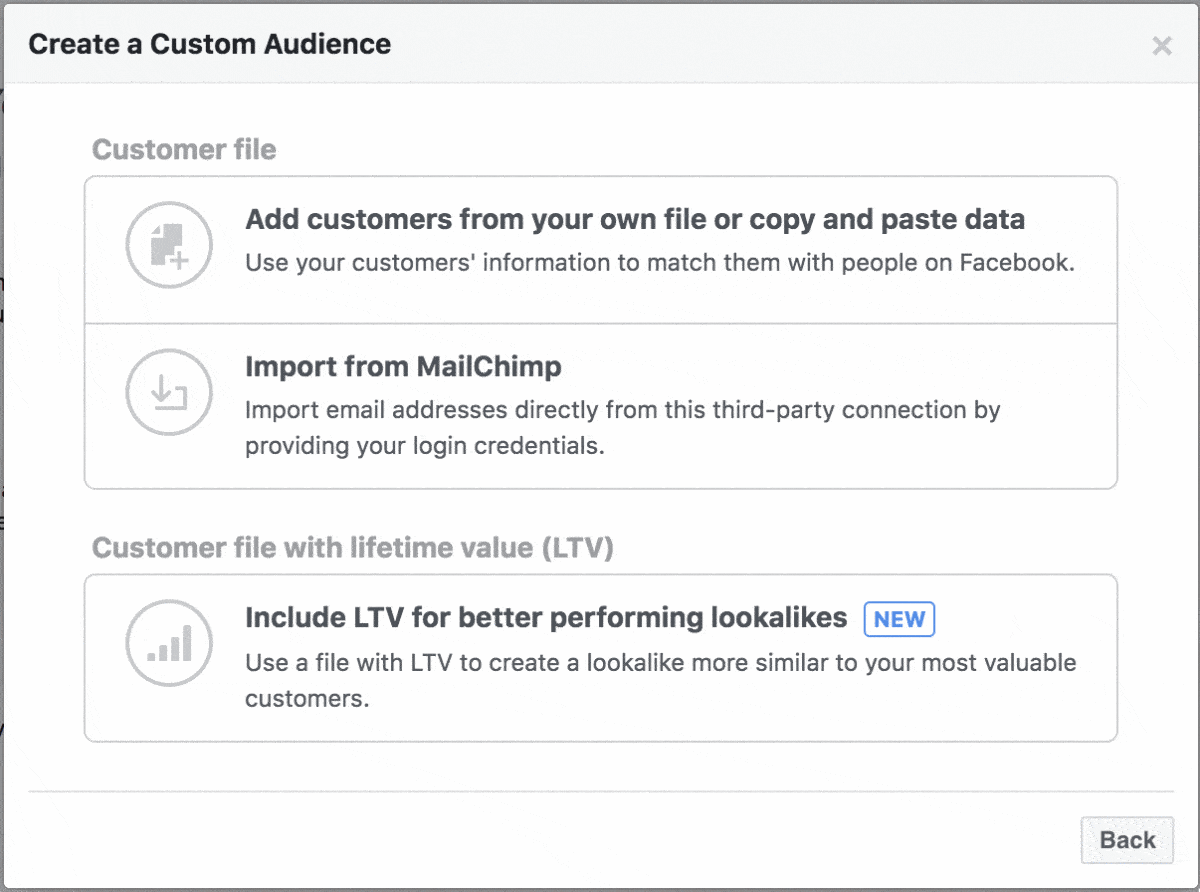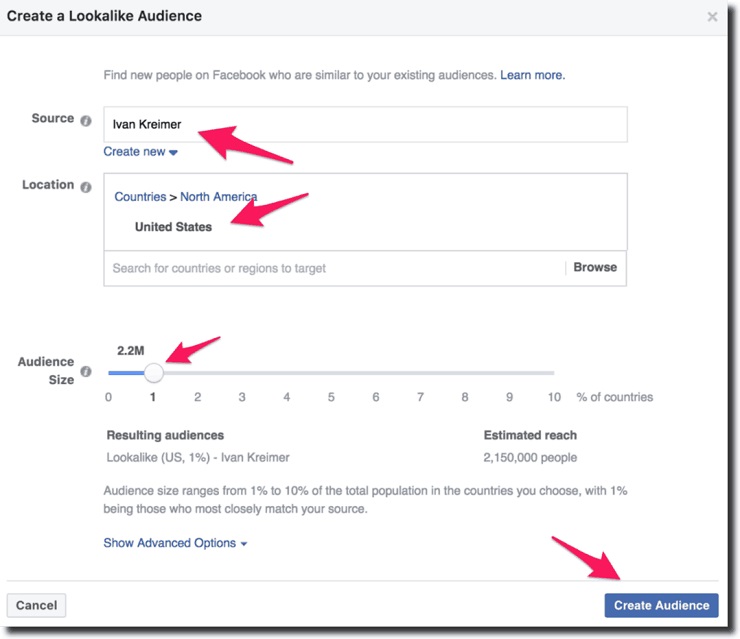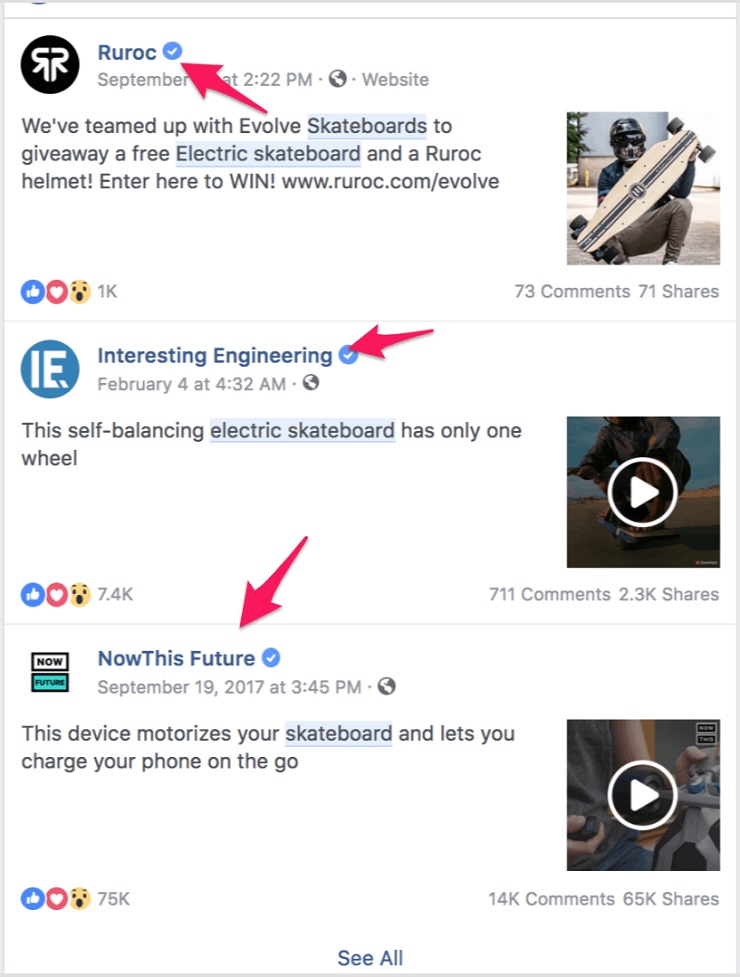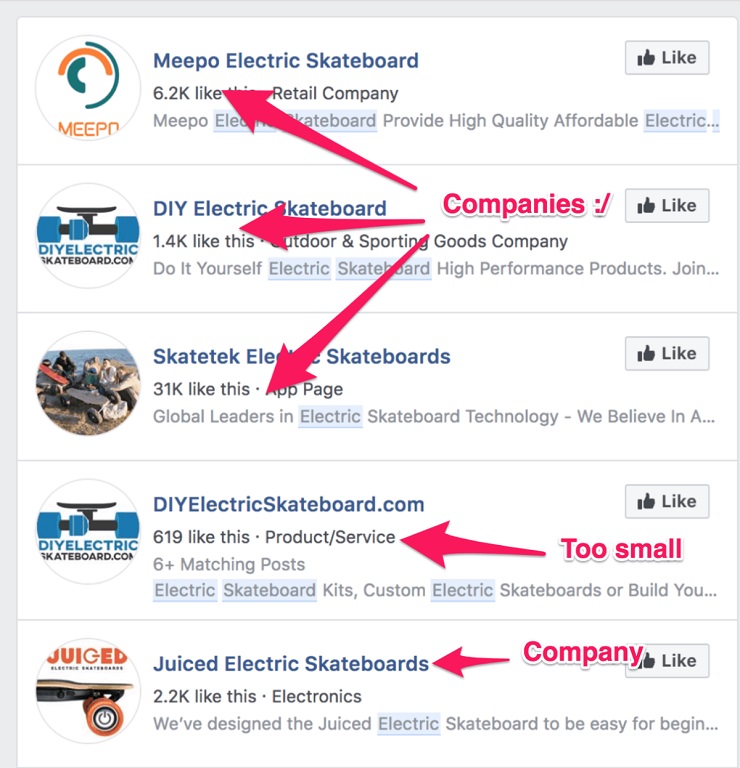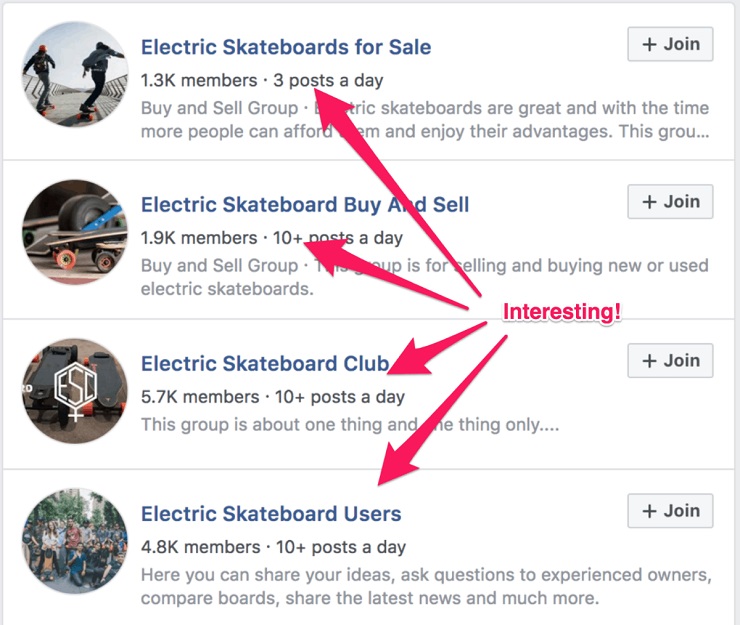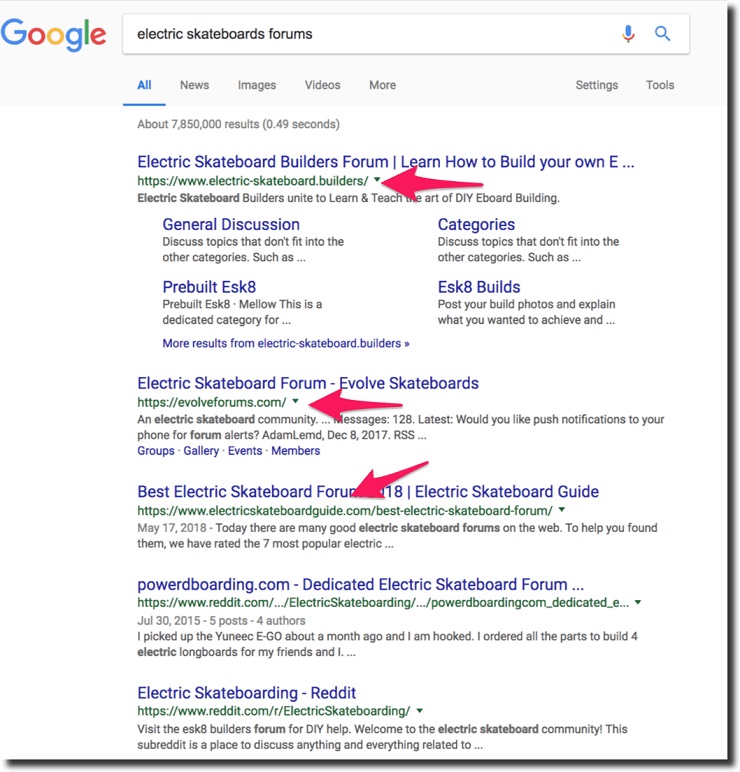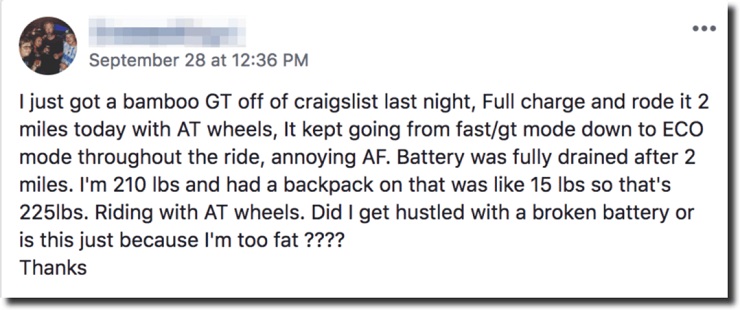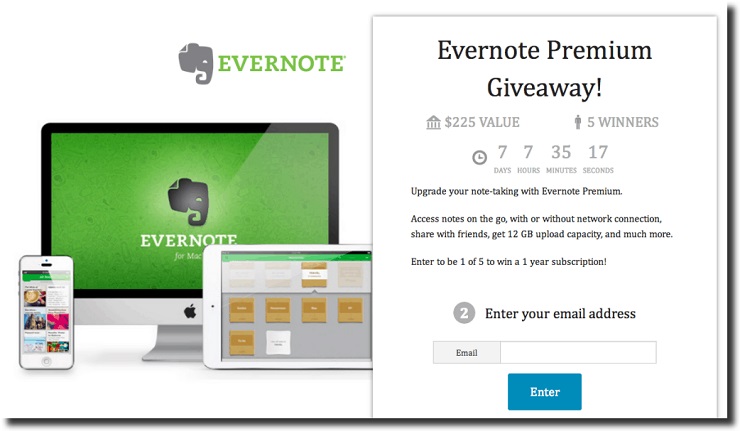The moment is here. Your hand is shaking. You know you have to do it. But are you ready? All the countless hours, the tutorials you read, the painful lessons—they all lead to this moment.
You take a big breath…
…and you hit “Live” in your dashboard.
You launched your ecommerce store.
Now what?
The dreams of having hordes of people flocking to your store won’t become true unless you take the right next steps. You need to attract people to your site, in addition to having a great product.
Where do you start?
To answer this timeless question, we talked with six leading marketing experts to ask for their best tips to help you attract your first customer. As a result, we’ve come up with four powerful tactics you can use today to get your first ecommerce sale in a short amount of time.
Let’s dive in!
Start With Your Network
All that excitement and pressure are gone: You’ve launched your store.
I remember when I launched my own store a few years ago. I was a newbie, had never launched before, and was highly inexperienced in the world of marketing.
I really wanted to get it right.
So I did what any entrepreneur would do. I started reading blogs and magazines (like Foundr) that taught me how to market an ecommerce store. I tried everything: SEO, content marketing, PPC, email marketing, you name it.
Sales barely came through.
Nothing seemed to work.
Why?
Was it that my product was bad? Was I doing something wrong?
In retrospect, I know why I failed to promote my store effectively. I was trying to do too many things at once, none of which I had any experience with. What’s worse, I had forgotten one simple, reliable thing I could have done to generate my first ecommerce sale.
I had forgotten my own network.
It doesn’t matter if you have a few real friends or a hundred, your network is the easiest group of people you should talk to. And I’m not the only one who thinks using your network is one of the best ways to get your first ecommerce sale.
Jeff Sheldon, founder and CEO of Ugmonk, an ecommerce store that sells minimalist clothing, agreed:
Type out personal emails to family, friends, and bloggers who you think might dig your product.
Not one mass email blast, but spend the time to make each email relevant and personal with a concise explanation about why they might be interested in your product.
Talking to your network. Being personal. Thinking about what they could get from your product. May sound too easy, but why wouldn’t it be easy?
Your network exists to support you. If you use it wisely, they’ll be all too happy to look at your store, and if your pitch is good, buy from you.
Noah Kagan, Founder and CEO of Sumo, was even more emphatic about it:
The first sales always come from your own network.
Check out your Facebook groups, people on your text message, Linkedin Contacts, Church / Synagogue, best friends, etc.
Too often, people make it hard by going outside their network.
Geez, Ivan, why did you make it so hard on yourself? 🤦
If you want to tap your network to generate your first ecommerce sale, here’s what you need to do.
Step 1: Scan Your Network
Let’s start with the low-hanging fruit: Facebook.
Your job is simple: find your friends. Think about those you believe could be interested in your product. Repeat the process in LinkedIn. Look for former bosses, partners, clients, or business friends who fit your target market. You can even do the same with your email and phone contacts.
Finally, think about any friends or family members who are outside social networks. Do you have a rich uncle, like Scrooge McDuck? If so, contact him! The same applies to your wealthy grandma, your well-to-do cousin, or your ever-so-loving parents.
Step 2: Contact Your Network
One problem with any pitch can be a lack of trust between the parties. When you pitch your local VC fund manager in an elevator, the first question they may ask themself is, “Who is this person?!”
You need to “give before you take,” as some say.
When you pitch to your network, in contrast, you don’t have to go through that pain. You can skip the preliminary work. Of course, you should be respectful—you don’t want to lose a friend to make a sale.
Also, while some of your friends may be willing to buy from you as a favor, some won’t be interested in your product. For that reason, it’s better to stick to those who might.
For example, if you sell running shoes, don’t talk to your 100-year-old grandmother (unless she’s super active. If so, go grandma!).
When you do reach out, keep it simple. You can get your first ecommerce sale by asking right away for it, or you can take a one-two punch approach, where the first contact is to reconnect and ask whether your friend is interested, and the second is where you send the link to your store.
Whatever the case, depending on the individual you’re contacting, use your best judgment.
Here’s a template you can use:
Hey ,
I hope you are doing well.
I probably didn’t tell you, but I’ve been working on a side gig that I’m very proud of and excited to grow.
I sell for . Since you belong to I thought you may be interested.
Do you want me to send you a link? (Optional: Here’s a link to my store: )
Since I’ve just started, a purchase would mean a lot to me. If you have any questions, I’d be happy to help you.
Cheers,
Adapt the pitch as necessary. Make it more focused on the sale if you want.
What’s important is you start with your network and grow your store from there.
Learn How to Start a Profitable Store in 12 Weeks or Less. Join our FREE Ecommerce Masterclass!
Use Facebook Ads
Back in your grandparents’ days, store owners had to sell to the people who walked into their brick-and-mortar shops. If you could have told them that one day they’d be able to sell to over 2.23 billion people, and over 214 million from the United States along, they’d have thought you were crazy. Or fainted from excitement.
The fact is, nowadays you can sell to that many people with the help of a little company built in the dormroom of a Harvard student.
That’s right, we’re talking about Facebook—specifically, its advertising platform.
Facebook Ads are a highly effective channel where you can promote your products, measure the exact amount of money you want to invest to attract a visitor, and test new ideas to generate sales.
But don’t take my word on this. I asked Maneesh Sethi, founder of PAVLOK—a company that manufactures wearable devices that helps people break bad habits—what he’d recommend to a new ecommerce store owner who wants to generate their first sale, and he said:
I’d do Facebook advertisements right away. I’ll add a pixel to my site, do custom audience and lookalikes. Facebook and Instagram are where the eyeballs are right now and ads in it are still relatively cheap.
Here’s how you get started.
Step 1: Add the Facebook Pixel
In order to track the people who visit your site, you need the Facebook pixel. This is the code you’ll use in your site that gives your visitors a “cookie” and lets you track their behavior.
Start by going to your Ads Manager, and in the top menu, go to the “Measure & Report” column, and click on “Events Manager > Pixel.” Or just click here (make sure to be logged in to Facebook first).
Once there, click on the “Set Up Pixel” button.
Then, select the setup method. The tag manager is the most scalable and efficient, but also the hardest to set up. Since you’re just getting started, let’s take the simplest road, which is the second one.
Copy the code you’re given, and install it in the ecommerce platform software of your choice. In most cases, you can paste the code in the “Preferences” or “Settings” section of your dashboard.
Finally, verify it. Install the Pixel Helper you’re given in the last part of Facebook’s pixel menu shown before, and test it.
If it’s working, great! Let’s keep moving.
Step 2: Create a Custom Audience and Lookalike Audience
In the simplest terms, a custom audience is a group of people who have visited your site and have carried out a specific, predefined behavior.
Since Facebook can connect your site’s visitors with their Facebook accounts, you can target them with your Facebook Ads.
Sounds pretty sweet, doesn’t it?
It is, and that’s why Facebook marketers go nuts with custom audiences—they’re really effective. Since you’re messaging people who already know who you are, it’s much easier to increase the effectiveness of your marketing.
You can create a custom audience for:
- Your site visitors
- Your email subscribers
- Your customers
Lookalike audiences, on the other hand, are groups of people that Facebook identifies as similar to one of your custom audiences.
For example, Facebook may identify that your custom audience is mostly men between 25 and 30 who like sports. When you ask Facebook to create a lookalike audience, it will grab people from its database who share those demographics, target them with your ads.
Doing all of this is much simpler than it sounds. In this circumstance, you want to create custom audiences for:
- Your email subscribers (if you have any)
- Your site visitors
- Your Facebook Page fans
Since email subscribers tend to be closer to converting than visitors or fans, create them in the order shown above, which goes from most effective to least effective.
In the Ads Manager, click on the Audiences link in the top bar. There, click on the first link, “Create a Custom Audience.”
Here, you can choose which audience you want to create.
In the first case, you only need to upload your list of emails as a .CSV.
In the second case, which is under “Website Traffic,” you will need to determine the kind of visitor. You can choose the people who visited your whole site, a specific category, a specific product page (or pages), and anything in between.
When you are done, you will have your first custom audience done. You’ll use this in the next step.
Once you’re done with your custom audience, go back, and click on the second link, “Create a Lookalike Audience.”
Creating a lookalike audience is much simpler than a custom audience. Here’s what you need to do:
- Select the source—your custom audience
- Select the location—focus it on your local market, even if you ship internationally, make it specific
- Select the audience size—the smaller, the better, so keep it at one
Click on the “Create Audience” button, and you’re done!
Step 3: Build the Campaign
Now that you have your custom audience and lookalike audience, create your campaign.
There are three things you need to do:
- Create the campaign, in which you define the objective
- Create the ad set, in which you define the audience and the budget
- Create the ads, in which you will define the creative elements of the ad
Creating Facebook ads for an ecommerce store is more art than a science. With so many moving pieces, it can seem a bit daunting at first, but this shouldn’t scare you off.
Since explaining a Facebook ad campaign could be an article on its own, take a look at the campaign Noah Kagan carried out after spending over $3 million in this channel, or the way Common Thread Collective generated $4 million in ecommerce sales in less than 30 days.
Step 4: Use Video Ads
While Facebook Ads are highly effective, there’s something else you can use to make your campaigns even more effective: video ads.
People love Facebook videos. What’s more, Hubspot found 90% of users believe product videos help them in their decision-making process.
The expert behind this tip is Andrew Youderian, founder of eCommerceFuel Jobs. He has personally used video ads to great success, that’s why he said:
To generate my first sale as quickly as possible I’d start by driving paid traffic to the product page with Facebook video ads.
Video ads can generate strong ROAS (Return on Ads Spend), allow you to showcase the product in detail as well as re-target based on engagement or watch time of viewers.
I love using paid traffic when launching a new brand because it can deliver results immediately and help you start collecting feedback from customers without the long lead-times of organic marketing.
Often the feedback you get early on is more important than making top-dollar for every early sale.
It’s hard to beat paid traffic for that rush-inducing first sale when launching a product!
Your videos don’t have to be professionally produced. You can record a selfie video, an explanatory video where you show how your product works, or even a testimonial from one of your customers.
When running a video ad campaign, Constantina Kokenes actually recommends you make them look like they aren’t an ad. Also, as Margot da Cunha reports, using an ad without sound, with closed-captions, makes it easier for the user to consume the content and increases video view time by an average of 12%.
Of course, if you want to go the professional route, by all means, go for it. But when you’re just getting started, it’s better to hit the ground running, so make it easy on yourself and don’t wait to spend five-figures on a video before you run your first campaign.
Learn How to Start a Profitable Store in 12 Weeks or Less. Join our FREE Ecommerce Masterclass!
Work with Your Community
Imagine for a minute you were transported back to the 1970s (yes, we have a time machine at Foundr’s headquarters, don’t tell anyone). You are an entrepreneur, just like you are today, and you have a product you want to sell to the world.
You have no internet. That means no Facebook Ads, no SEO, and no content to publish.
It’s you versus the world.
What do you do?
In this case, you can do the one thing all entrepreneurs have historically done: you pound the pavement and develop a customer base. That means proactively finding your people and connecting with them.
Connecting with your customer base will help you:
- Find the kind of questions they have and doubts your product raises
- Learn the problems they face and the way they describe them (something that will come in handy when you write your product copy)
- Uncover the ways they plan to use your products
- Discover the correct price point
- And much more
How do you find and develop such a customer base? In our 1970s scenario, we would likely hit the road, going to trade shows and stores to make face-to-face connections. That’s still an important strategy that will be important for a lot of people, especially those selling physical products. But fortunately, we do have the internet, and we can accomplish something very similar using online communities.
This is exactly what Austin Brawner, an entrepreneur and consultant host of the highly acclaimed Ecommerce Influence Podcast, recommends to new ecommerce store owners:
I would find the community of people who needed my product the most and post it in forums, Facebook Groups, on Reddit, etc. to try to get feedback.
Here’s how you do it.
Step 1: Find Online Communities
When you are getting started—whether you’ve launched your store or not—you want to be as close to your potential customers as possible. Online communities give you a perfect glimpse of their lives without any interruptions or biases.
There are so many online communities out there, that I’d dare to say it’s impossible you won’t find one for your product. To start, go to Facebook. Search for a keyword that’s closest to your product or industry.
Let’s imagine we were selling electric skateboards:
Then, you can check the posts, pages, and groups tabs to see what you find:
You can find many groups in the posts tab alone, as in our case:
Repeat the process in the pages and groups tabs, looking for high engagement and followings.
For example, in the pages tab, I couldn’t find many interesting pages, as most are related to companies or small niche pages.
Finally, I found some groups with potential to be used in later stages.
Another option is to use Reddit, a site that has one of the largest overall communities, pooled around almost any interest you imagine.
From the homepage, search the same keyword to look for a subreddit (the equivalent of a group in Facebook). In our case, we’ll again use electric skateboards:
Right away, I find two subreddits, plus another related one. Don’t overlook the results page, where you can find further subreddits where people talk about the keyword you used before.
Finally, we’ll search for niche forums. While forums have largely died out since Facebook took their place, there are still some niche sites that continue to be relevant. In this case, hit up Google.
Just like that, I found three forums that I can use later on. In the end, you should have at least one group defined. In the case you find more, make a list and keep them organized.
Step 2: Get to Know the Audience
With your list of communities in hand, you will start with the ones that have the most people and the best engagement (e.g., more comments, upvotes, and topics created).
Now, you will simply sit down and browse the different posts and comments that show up. Take the group “Electric Skateboard Users” we found before on Facebook:
With 4,801 members and an average of nine daily posts, this is a highly engaged and large group you can rely on to get to know this audience.
We can see most people talking about boards for certain body weights, batteries, and other components to use in a skateboard, photos of their latest skateboards purchased, and competitions.
At first, some of this data may seem irrelevant, but if you dig deeper, you will start to see patterns behind common problems or questions.
For example, take this post:
Right away, you see three things:
- The poster is annoyed by the change in riding mode
- The battery life is a big concern
- Body weight may be an issue
When you promote your product, you can take extra care in mentioning the riding modes and how they don’t change, the battery information and performance, and how the rider’s weight impacts the battery. Those are three ideas right off the bat, but you can keep reading to get more information from the community.
What’s more, you can participate and become a useful member of the community, which will make it much easier later on to promote your products or invite the other members to visit your site when you publish new content. Also, you can get content ideas from the posts you analyze.
Take a few hours to read through as much content as possible. Don’t overlook any comment that could give you insights on the things the community cares about. You will use this information in the next step.
Step 3: Generate Qualified Traffic
There’s an unwritten law of online communities: “Never sell anything to anyone.”
I know many will complain and will defend themselves, saying there are many cases in which people successfully promoted a product in an online community. But still, I believe people belong to online communities to socialize, not to buy things. (This is one reason social commerce, a concept that was very popular in the late 2000s, died out after companies realized people don’t like shop and socialize at the same time.)
That means you don’t want to promote your products to an online community, particularly if you aren’t already well known and trusted in the group.
Your goal is to open your online doors to a group of people who already know you and trust you. This is one of the many reasons why building a list before launching can be paramount to a successful launch.
Instead of selling, you will give away something for free, an offer so irresistible your audience will want to check out.
Once on your site, you can get people to sign up to your list and eventually make a purchase.
What can you give away? Useful advice the community needs. Your previous research was all done to find these pains you will now ease with your solutions.
In the case above, we saw how the poster was worried about the battery and body weight. You can create an article about the different ways body weight affects speed, riding experience, and battery life. You can give tips to reduce problems a rider can face and offer actionable advice.
When promoting a piece of content, focus on what you’re giving away, the help and value you offer, then the fact people should visit your site. Even if you’re not selling anything, sounding salesy at all is a big no-no in most online communities.
Here’s a template you can use when promoting your content:
Hey everyone,
I’ve seen most people are having problems with battery life. I’ve found there are three reasons why batteries drain too fast:
I’ve found that to overcome these issues, you should:
To get into more detail than is possible here, I’ve written a post that elaborates on solutions to these issues.
You can check the link here: .
Either way, what are your thoughts on this?
You don’t want to use online communities to drive traffic forever, rather, use it as an old school growth hack to build your customer base and make your first sales. As Austin Brawner said:
That first sale is going to be very manual. Not going to worry about driving paid traffic until I’ve sold at least 100 of them and gotten some feedback.
Launch a Viral Giveaway to Build Your List
Successful ecommerce businesses generate thousands of sales consistently, not by always promoting to new people, but by selling to people who already know, trust, and believe in them. Then, the people who believe in the brand talk about it, and the marketing that the company used to attract one customer becomes a multiplier.
Talk to one, sell to many.
Of course, your problem when starting out is that you lack an audience in the first place. Worse yet, you’ll need to talk to multiple people to generate one sale. The math is against you, I’m afraid.
But…
What if you could build an audience relatively quickly, and tap into the same multiplier effect—what growth hackers call the “viral coefficient”—without spending much money?
One way to do just that is with viral giveaways.
Steve Chou, founder of MyWifeQuitHerJob, swears on viral giveaways as one of the most important tactics he has used to grow Bumblebee Linens. He told me:
If I were just starting out with no audience, I would build an email list quickly by doing a big giveaway of my products. By driving traffic to a dedicated sweepstakes landing page and using a service like ViralSweep to help augment the contest, you can easily build up a relevant list of customers who are interested in your products.
A viral giveaway lets you build a list and tap the viral coefficient at the same time, saving you time and money.
Chou says this kind of viral giveaway has brought him amazing results:
I’ve used this strategy in the past and have obtained emails for less than $.15 per subscriber achieving an overall ROI of 4-8X. This email list can subsequently be used to launch future products as well.
Step 1: Define Your Giveaway
You can’t launch a giveaway without something your audience wants. But how do you define that?
As always happens in marketing, start with your audience. What do they want? What do they buy (or wish to buy)?
Previously, you saw how talking to your first customers is paramount to learning more about them. This is a good case where you can use your intimate customer knowledge.
At first, the most obvious giveaway offer would be the product you sell. In our electric skateboard example, we could offer our own. Simple and straightforward. On the other hand, you can offer a bundle of related products. Books, accessories, and other smaller and complementary products can work as well.
The ultimate goal is that your giveaway should be a no-brainer for your audience, something they can’t refuse.
This offer doesn’t have to be complicated. For example, when Jack Paxton wrote an article for the Foundr blog about building an audience using contests and Facebook ads, an extra at the end of the article offered personal help to find a contest idea. This ended up generating dozens of comments and shares, all with a simple offer to help.
Step 2: Build Your Landing Page
Your landing page is the vehicle on which you will promote your giveaway. In it, you will feature the offer and its value.
In contrast to most landing pages, the power behind a giveaway landing page is the offer itself, so you don’t need to write much copy. As long as the offer is truly amazing, most of the job will be done by the products given away.
Take a look at the following giveaway landing page from Noah Kagan (who we mentioned before):
The copy is short and benefit-focused, because everyone knows what Evernote is and the benefits of its premium version. Doesn’t take much convincing.
Three of the most popular giveaway landing page creators are:
- Gleam.io (whose CEO is Stuart McKeown, the expert behind our List Building course)
- KingSumo (from Noah Kagan)
- ViralSweep (which Steve recommended)
- VYPER
What these tools have in common, and what makes them so useful, is that people need to complete actions to get more points, which increases their chances of winning the competition.
These actions include:
- Sharing on Twitter
- Sharing on Facebook
- Sharing on Pinterest
- Commenting
- Watching a YouTube video
- Follow on Twitter
The more they promote the giveaway for you, the more chances they have to win. But also, the more free promotion you get.
Not only you get free advertising, you also get word of mouth, which, according to a study done by Ogilvy, Google, and TNS, 74% of consumers identify as a key influence on their purchasing decision.
In other words, you obtain more publicity, and at the same time, more effective publicity!
We couldn’t make this up if we wanted to, giveaways are that effective.
Step 3: Promote Your Giveaway
While part of the promotion work is done by your customers, you still need to do some of your own, of course.
At first, you can promote just as you’d normally promote a new piece of content, using:
- Email marketing
- Social media
- Your own site
But since what you’re giving away is free and highly valuable, you can also do some email outreach.
Search for people in your industry who have large audiences, like bloggers, and contact them to see if they are interested.
You can use the following template:
Hey ,
Would your audience be interested in getting for free?
Since you write so much about , and you have such an engaged audience, I thought they may want to participate for a chance to win.
I don’t ask anything but a tweet or a Facebook share on your end.
Would this be a good fit for your audience?
Cheers,
You can test and send the URL of your giveaway landing page in the same email, although in my experience, that can put off more people than help.
You can also use the Facebook groups you used before to promote your giveaway, although be careful not to break any moderation rules. As always, caution is best when you’re promoting on someone else’s ground.
Learn How to Start a Profitable Store in 12 Weeks or Less. Join our FREE Ecommerce Masterclass!
Get That First Sale, Watch Your Business Take Off
Getting your first ecommerce sale and building a large audience isn’t easy. When you are getting started, you want to start on the right foot, having each step count in your effort to make your business profitable and successful.
Your start doesn’t have to be complicated, however. Instead of trying every single marketing tactic you find on Google, follow the advice you learned today.
Talk to your network and your audience, directly, selling your products manually until you find yourself comfortable knowing you have a product people love and want. Use Facebook Ads to tap into the power of a scalable, proven marketing channel. Take advantage of your audience’s love of winning free products by using email giveaways.
Your first sale is closer than you think. Now it’s time you pick one of the four tactics shown in this article, and get started.
Which of these ecommerce sales tactics will you implement this week? Make sure to leave us a comment below.
